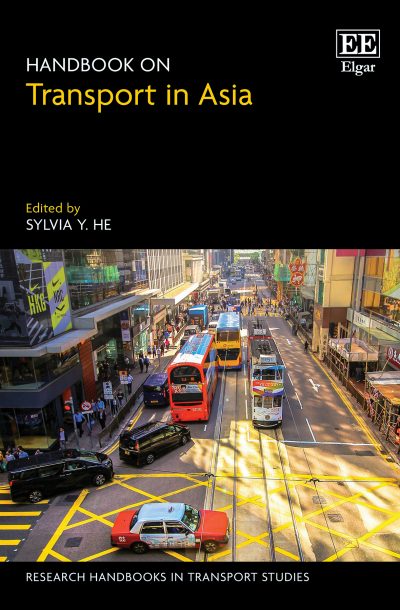
Sylvia He, director of the Urban Studies Program at the Chinese University of Hong Kong, is a champion of sustainable transport—she thinks that it can make a significant difference in a world where emissions from automotives contribute significantly to pollution and climate change.
He led a 2019 WUN project team in organising a series of WUN-sponsored workshops on e-mobility and smart cities between 2020 and 2022. Following these workshops, each of which attracted more than 100 participants from over 20 countries/regions, she was approached by Edward Elgar Publishing. The company asked her to edit an extensive new volume on sustainable transport.
Entitled Handbook on Transport in Asia, it was published in June 2025.
As editor, He includes writings from 67 scholars specialising in accessibility, big data applications, land use planning, low-carbon technologies and an array of other issues related to sustainable transport systems.
The chapters are unified by discussions of urban layouts and differing infrastructures, demographic complexities and the financial challenges of implementing these systems. The authors aim their research toward a car-free future, analysing behavioural patterns and how to adjust them in order to facilitate practical use of sustainable solutions such as cycling and public transit.
The research in the book aligns with the original WUN project objectives, which emphasise human well-being through the creation of urban environments that encourage mobility using physical exertion—a key factor in both physical and mental health.
Early reviews are glowing. “‘Underscoring the diversity and commonalities across the continent, the Handbook on Transport in Asia is a notable assembly of studies that contextualise approaches to planning for mobility in dense and rapidly changing environments,” said Kelly Clifton, a transportation expert at the University of British Columbia. “With a comprehensive and critical scope, He and her contributing authors elevate the unique social, land use, policy, and technical considerations of planning for the needs of over half of the world’s population.”
He has continued to publish her own work as well. A recent paper, for example, discusses the variations in walkability by time of day using mobile phone data.
The study analyzed some 1.75 billion walking trips in Shenzhen, China. “This study used six months of mobile phone data to reveal Shenzhen’s detailed walking patterns, offering an unprecedented spatiotemporal analysis,” she said.
Like her other work, it refines our understanding of how “government policies, urban planning initiatives and urban design ideas can transform our cities and neighborhoods to make them more workable, healthier and more sustainable.”
